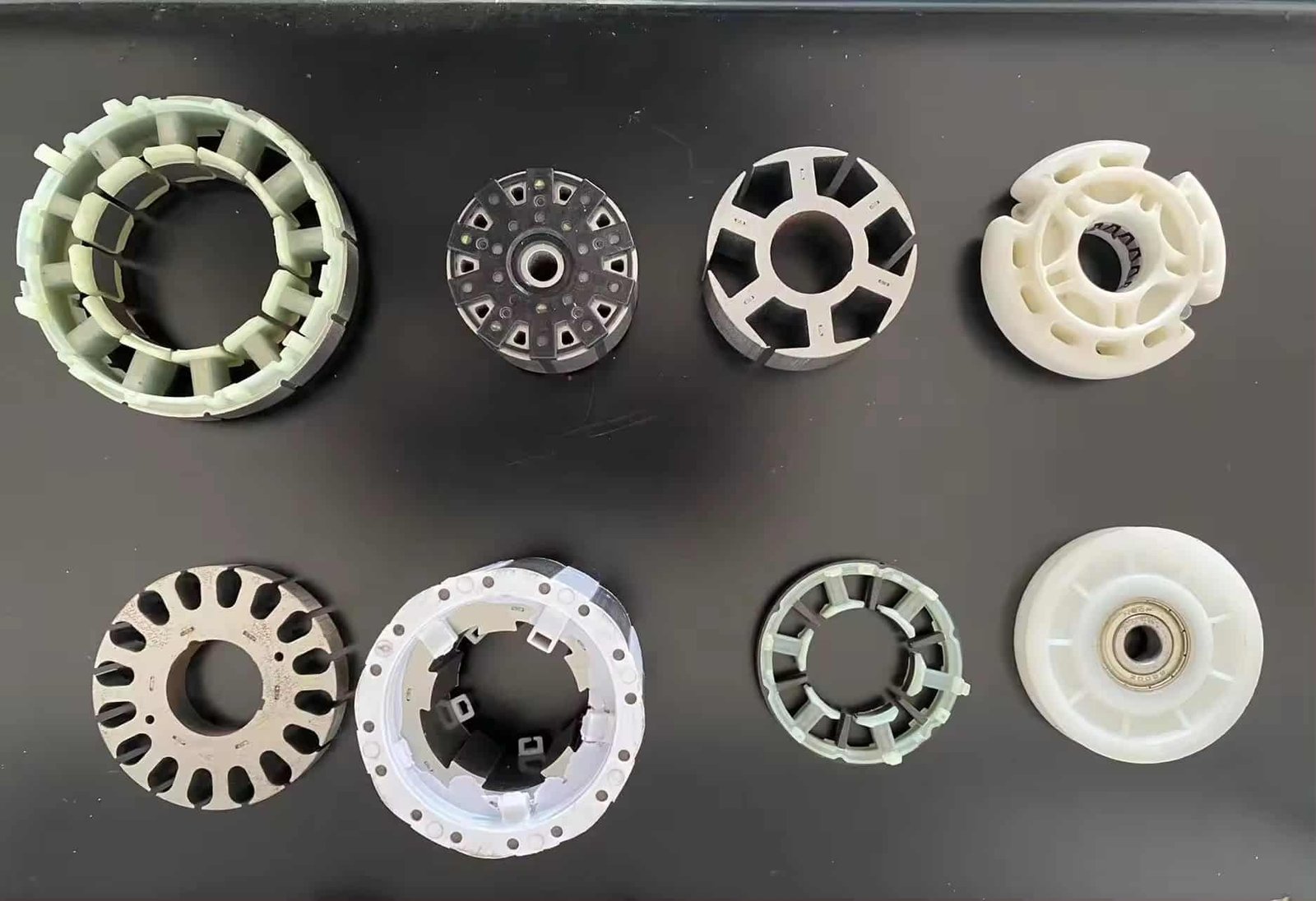In the precision operation of the rotor assembly line, strict requirements for each component are the cornerstone of ensuring product quality and production line stability. So what are the requirements of the rotor assembly line for each component? How to choose the right components? Let Vacuz introduce it below!

120 Ton Precio de fábrica de baquelita del rotor del transformador de red de moldeo inductor bobina de fabricación de plástico vertical de moldeo por inyección de la máquina con mesa giratoria
Component requirements and selection strategies for rotor assembly production line:
In the core link of motor manufacturing, the rotor assembly production line, each component plays a pivotal role. From rotor core to magnetic steel, from shaft core to bearing, and even automated assembly equipment and other auxiliary components, they together constitute the basis of motor performance and quality.
1. Strict requirements for components
1. Rotor core: As a key part of the magnetic flux path, its size and shape accuracy must meet certain standards to ensure seamless cooperation with magnetic steel, shaft core and other components. Surface finish is equally important to reduce friction and potential damage during assembly. In addition, the selection of materials must strictly follow the design requirements, including key indicators such as magnetic conductivity and mechanical strength.
2. Magnet: As the core of generating magnetic field, the material properties of magnet directly determine the efficiency and performance of the motor. High coercivity, high remanence, and low hysteresis loss are the core considerations when selecting magnetic steel. At the same time, the specifications and quantity of magnetic steel need to be accurately calculated and configured according to the specific parameters of the motor, and the clear marking of the N pole and S pole is also an important guide in the assembly process.
2. Shaft core: As a key component supporting the rotation of the rotor, the dimensional accuracy of the shaft core cannot be ignored. Its material must have excellent mechanical properties and processing properties to adapt to the high-speed and high-load working environment. The application of surface treatment processes such as quenching and carburizing further improves the hardness and wear resistance of the shaft core.
3. Bearings: The selection of bearings is directly related to the stability and reliability of rotor rotation. High-precision, low-noise bearings are often selected, and the model and specifications must be accurately matched according to the weight, speed, and load of the rotor. Standardized installation and lubrication processes are also the key to ensuring the performance of bearings.
4. Automated assembly equipment: Modern rotor assembly production lines cannot do without high-precision, high-stability automated assembly equipment. These equipment must have functions such as automatic feeding, accurate positioning, and automatic assembly to improve production efficiency and reduce labor intensity. At the same time, the design and operation of the equipment must strictly follow safety standards to ensure the safety of operators.
5. Other auxiliary parts: such as balance blocks, fan blades, gears and other auxiliary parts, although not core parts, their precision and performance are equally important. Their selection and processing must strictly follow the design requirements to ensure the overall performance and balance of the rotor.
2. Parts selection strategy
1. Select according to design requirements: First, the design requirements and use conditions of the rotor must be clarified, and parts that meet performance indicators and precision requirements are selected on this basis.
2. Pay attention to quality and reliability: Select suppliers with a good reputation and long-term cooperation experience to ensure the quality of parts and components. At the same time, strictly test and test the parts to verify whether they meet the design requirements and use conditions.
3. Consider cost-effectiveness: Under the premise of ensuring quality and performance, reasonably control costs and select cost-effective parts. At the same time, formulate effective bulk procurement and inventory management strategies to further reduce costs and improve production efficiency.
4. Pay attention to maintainability and replaceability: Select parts that are easy to maintain and replace to reduce downtime and maintenance costs of the production line. At the same time, consider the standardization and universality of parts to facilitate interchange and upgrade between different equipment and products.

Línea de producción de bobinas de estator de motor BLDC
What are the requirements of the rotor assembly production line for each component? How to choose the right parts? Vacuz has made a simple description above, I hope this knowledge can help you!
Correo electrónico: sales@vacuz.com





